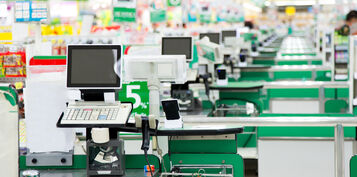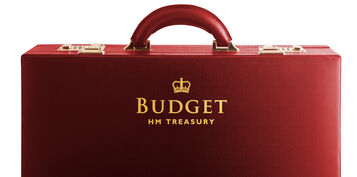“I’m still standing”
Ian Cowie on the art of when to sell.

“Sell” - not “sorry” - seems to be the hardest word for investors, whatever Elton John may have sung. The explanation is that investors always buy with some optimism about the future but whenever we sell, for good or ill, we are accepting that - at least as far as we are concerned - this share’s saga has gone as far as it will go. That isn’t always a happy experience.
As a long-term, buy-and-hold investor, rather than a short-term speculator, I like to let time do the heavy lifting for me. That takes some of the risk out of stock market investment, as demonstrated by the Barclays Equity Gilt Study every year.
To be specific, this analysis compares returns since 1899 from shares reflecting the changing composition of the London Stock Exchange with government bonds, or gilts, and cash deposits. Over any period of two consecutive years during that century and more, shares had an historic probability of 67% of beating bonds and 70% of beating cash. Put another way, the risk of shares doing worse than bonds or cash over any two-year period was nearly one-in-three.
However, if investors held shares for five consecutive years, the probability of beating bonds and deposits increased to 72% and 76% respectively. In other words, the risk of shares’ underperformance over any five-year period fell to nearer one-in-four.
Better still, shareholders who held on for a full decade had a 77% chance of beating bonds and a 91% historic probability of higher real returns than cash. Bearing in mind Barclays’ sample period of 122 years includes both World Wars and the Great Depression, this comprehensive analysis makes a compelling case for long-term investment.
Having said that, paper profits are all very well, but we haven't really made a penny until we sell. So, a fundamental question for all investors remains: when should we turn paper profits into real ones?
“Investors always buy with some optimism about the future but whenever we sell, for good or ill, we are accepting that - at least as far as we are concerned - this share’s saga has gone as far as it will go. That isn’t always a happy experience.”
Ian Cowie
The first step toward finding an answer is for each individual to regularly reassess our investment objectives. For example, that's why I sold more shares than ever before in August this year - as reported in The Sunday Times - because I have a fixed rate mortgage that expires next January.
I wanted to have cash to hand in good time, rather than remain invested ‘right up to the wire’, when the short-term risk of being forced to sell during a downturn would be relatively high. For example, in case something unexpected happened - like a war in the Middle East. No crystal ball was required to take profits by selling all my holding in the Gulf Investment Fund (GIF) at $2.49 per share, as I did in August.
Second, even long-term investors should consider taking some profits on a regular basis, to utilise our annual Capital Gains Tax allowance of £6,000. As the name suggests, this CGT-free opportunity really is a case of 'use it or lose it' and Polar Capital Technology (PCT) and Worldwide Healthcare (WWH), which have often featured in my top 10 holdings by value, have served this profit-taking purpose, several times, over the years.
Third, and less happily, risks are unavoidable in pursuit of rewards and it would be unrealistic to imagine that every investment saga has a happy ending. For example, if a share persistently underperforms its rivals, or a fund manager suddenly departs and the assets are put up for sale, or it unexpectedly cancels its dividend, it might be time to consider selling - as I recently did, for various reasons, at Digital 9 Infrastructure (DG19), Gore Street Energy Storage (GSF) and US Solar Fund (USF).
I must emphasise that I feel no rancour toward any of these shares and sincerely hope all of them have happier times ahead. It was merely a case of this individual investor feeling the time had come for a change and that my modest capital might be better employed elsewhere. For example, I am still holding PCT and WWH and hope to buy more in future. I might even invest in GIF again one day, depending on events in the Middle East.
Despite all the unpredictable shocks of the stock market, one of the very best books about investment is called “The Triumph of the Optimists”. That’s why, after more than a quarter century of being an investment companies shareholder, I am inclined to hum along with Elton when he sings: “I’m still standing”.
Ian Cowie is a shareholder in Polar Capital Technology (PCT) and Worldwide Healthcare (WWH), as part of a globally-diversified portfolio of investment companies and other shares.







